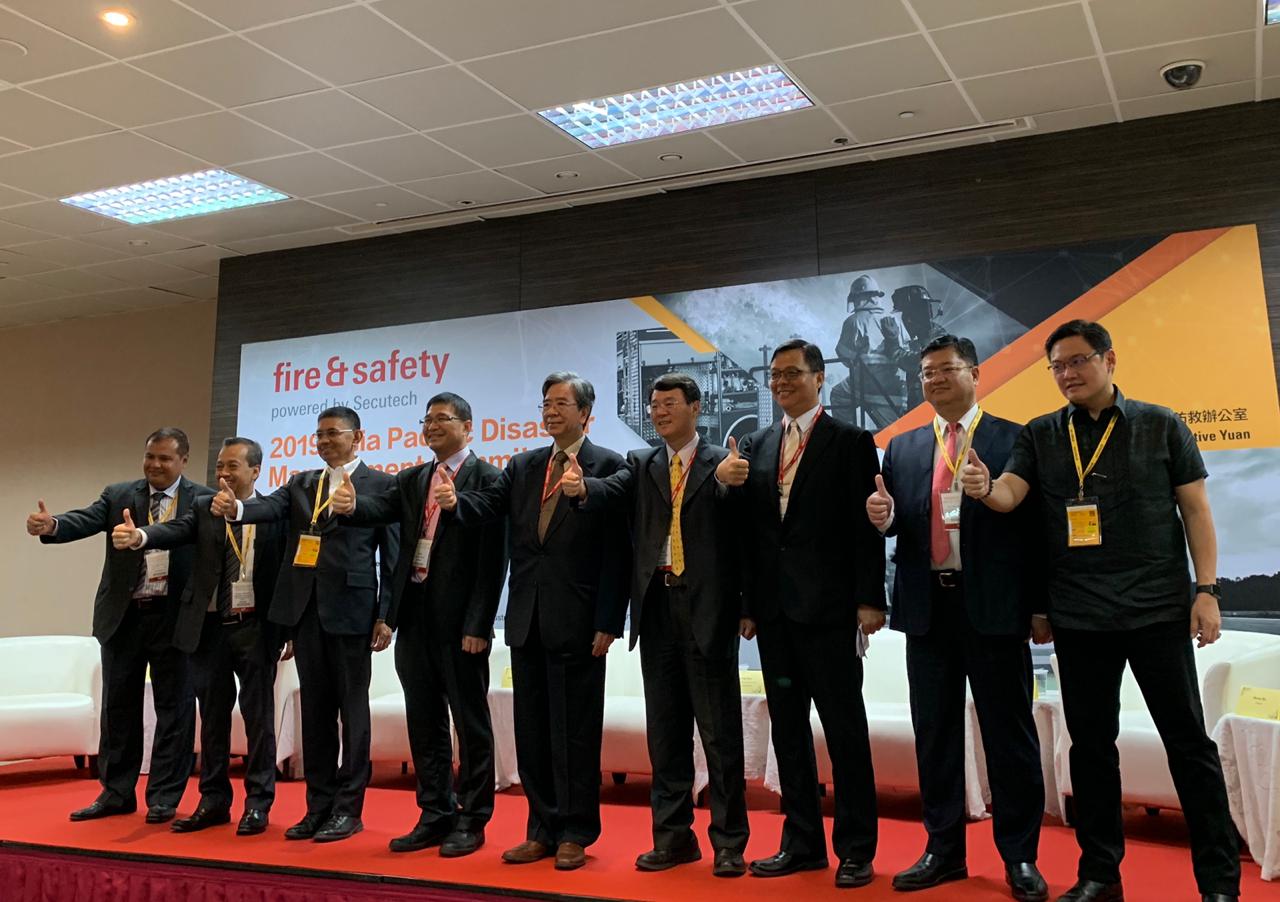Southeast Asian countries are regularly threatened by natural disasters. According to Indonesia’s National Disaster Mitigation Agency (BNPB), more than 2,000 disasters occurred in that country in 2018, causing more than 4,000 deaths and displacing 3 million people. The Philippines also faces worsening challenges caused by natural disasters, which have claimed 10,000 lives and affect millions.
Taiwan too suffers from this threat and has been proactively seeking ways to collaborate with neighboring countries to jointly tackle disasters. By providing capacity building programs, sharing technology in disaster preparedness, strengthening public awareness, and establishing disaster resilient communities, Taiwan is committed to partnership with ASEAN countries.
Since 2016, Taiwan has been promoting the New Southbound Policy (NSP), a new regional strategy for Asia that emphasizes a people-centered agenda and partnerships. The NSP highlights Taiwan’s economic and social contributions to the building of a regional community through five flagship programs: innovative industries, talent development, regional agriculture, medical and public health, next-generation exchanges, and the Yushan Forum.
By advocating for public-private partnerships (PPP), Taiwan recognizes the need for regional and local development of NSP partner countries, especially in disaster preparedness and management.
Crafting cooperation for disaster preparedness
Crafting regional cooperation in disaster preparedness is no longer a policy issue just for governments since no one is exempt when disasters strike. It is imperative to build a vibrant network for disaster preparedness, involving stakeholders from local and national governments, local and international NGOs, as well as resilient local communities to mitigate catastrophic damage and losses.
On May 9, Secutech 2019 was held in Taipei, along with a series of seminars and forums on information security and disaster management. Much attention has been given to the Asia Pacific Disaster Management Summit and the closed-door Asia Resilience Policy Dialogue with delegates joining from across Southeast Asia.
These two meetings were organized by the Taiwan-Asia Exchange Foundation (TAEF) and member institutions of the Asia Resilience Consortium (ARC). Jointly established by Messe Frankfurt, the Taiwan Association of Disaster Prevention Industry (TADPI), Taipei Medical University (TMU), and TAEF in April 2019, the ARC is a platform of think tanks, media, medical institutions and disaster management-related industries to promote PPP in disaster preparedness.
The Summit reviewed national systems and networks of disaster management as well as response measures in the Philippines, Indonesia, Myanmar, Vietnam, and Taiwan and identified the growing role of government in facilitating and executing disaster preparedness, mitigation and human assistance, and disaster relief (HA/DR). The closed-door Dialogue emphasized the mutual understanding among epistemic communities and stakeholders in Taiwan and Southeast Asia in tackling natural disasters in a synergic manner.
To this end, Taiwan reiterated its commitment to facilitating regional collaboration on disaster management to transform the community of suffering to a community of solutions.
Being resilient locally and regionally
Asian countries face three common challenges in disaster management. First, most of them lack resources in disaster prevention and relief, particularly local communities. Lacking resilience in dealing with natural disasters, local communities are increasingly vulnerable to worsening disaster-related risks.
Second, most Asian countries suffer from a coordination deficit. Disaster management involves layers of coordination and integration of information and actions at the national, regional, local, and community levels. The fragmentation of governance systems and ineffective coordination leads to state failure in disaster management.
Finally, the need for a local and regional best practice model is dire. Best practices are not limited to HA/DR during emergencies, but can also be employed in disaster preparedness on a daily basis. While there is no single solution to address different types of disasters, identifying best practices can encourage social learning both domestically and internationally and facilitate the development of innovative response measures.
To address these challenges, the practice of PPP is imperative. In Taiwan, the Office of Disaster Management under the Executive Yuan is the key institution coordinating joint efforts by various authorities – through different capacities – such as the Soil and Water Conservation Bureau of the Council of Agriculture, the National Science and Technology Center for Disaster Reduction, and the Water Resources Agency under the Ministry of Economic Affairs.
Taiwan’s cell phone based earthquake early warning system by the Central Weather Bureau is widely recognized by countries in Southeast and South Asia. The technology utilizes Cell Broadcast Entity (CBE) and the open big data system Civil IoT, a project of Taiwan’s Forward-Looking Infrastructure Development Program.
For the private sector and civil society, the ARC is committed to highlight best practices of Taiwan’s disaster resilient communities, medical resilience, and industrial support to promote public awareness in Taiwan and seek international partnerships in Asia.
The NSP and regional soft infrastructure
One of the most significant differences between the NSP and previous Southbound efforts is the NSP’s people-centered agenda and practice at its core. Growing trade and investment are only one of many indicators. The essence of the NSP is to engage and promote Taiwan’s soft infrastructure with partner countries and regional counterparts. The purpose is straightforward – to facilitate Taiwan’s support in overcoming common challenges.
Disaster preparedness and HA/DR are the least politically sensitive issue-areas that correspond with human values and human security, and they are also key policy areas where the NSP continues to deepen bilateral collaboration and regional integration.
Notwithstanding international political difficulties, the NSP has nourished transnational networks through a bottom-up approach since 2016. The diversified partnership of networks, consortia, platforms, and connectivity may link the needs of Taiwan with Southeast and South Asian countries, and it is conducive to accelerating Taiwan’s integration into the regional community based upon public-private partnerships.
The article is published on Pacific Forum
